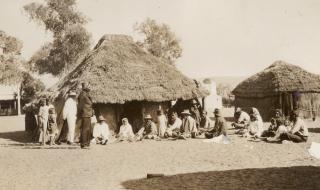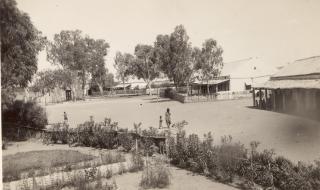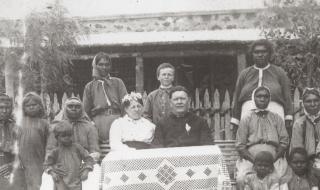
Hermannsburg under Pastor Carl Strehlow
Carl Strehlow is perhaps the best known of the missionaries to have worked at Hermannsburg. Appointed by the Immanuel Synod as their first missionary to Hermannsburg, he left a lasting legacy. He was not the only missionary there and many of the achievements in that time were a team effort between him and his wife Frieda Strehlow, co-missionary Pastor Bogner and the lay workers such as builders Mr. Hart and Mr. Haemmerling. Between them they rebuilt the neglected and dilapidated mission.
Read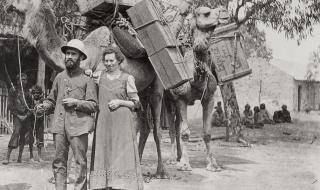
Establishing the Mission – a perilous journey and an uncertain start
The Hermannsburg Mission was established in 1877, following an arduous 20-month journey from South Australia. It was managed by Lutheran missionaries and the Lutheran Church from 1877-1982. It is the last surviving mission developed by missionaries from the Hermannsburg Missionary Society in Germany under the influence of the German Lutheran community in South Australia.
Read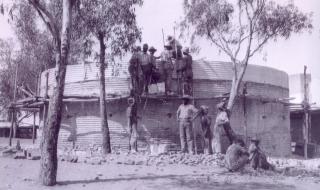
Kuprilya Springs Pipeline and Tank
By the time yet another long drought at Hermannsburg broke in December 1929, 85% of the children at the mission had died, many adults were left permanently weakened, 3,000 head of cattle and most of the horses had been lost. An ambitious plan was developed by Pastor F.W Albrecht to pipe water from Kuprilya Spring to the mission station.
Read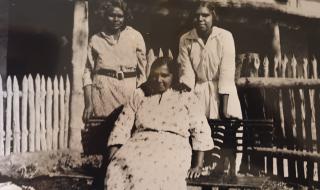
Marianne Graetz
Loved by the missionaries’ children, Marianne (pronounced in the German style ‘Marianna’) Graetz worked for both the Strehlow family and the Albrecht’s.
Read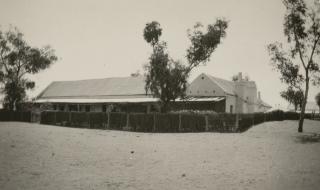
The Manse and its earliest inhabitants
The Manse was completed in 1888 and built to accommodate the first missionaries and their equally intrepid wives who had journeyed from Hamburg, Germany into a new and totally unfamiliar world in Central Australia.
Read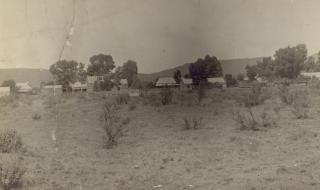
The Stockman’s House
The exact origin of this building is a mystery waiting to be solved; at its core it may be as old as 1896 although there have been many modifications over the years.
Read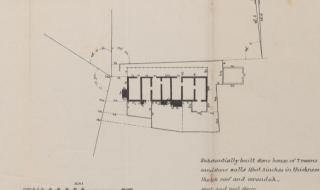
The dream of a Lutheran colony in Central Australia
Building a strong Lutheran community took more than a couple of missionaries. The colonists’ building was home to the lay missionary families who played an essential role in maintaining the viability of the mission station.
Read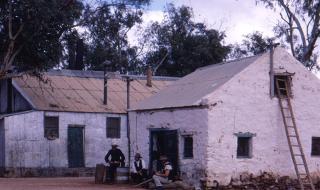
The bakehouse and dining room
Feeding the mission was always a challenge! The bakehouse, dining room was built during the period when Pastor F.W Albrecht was the chief missionary. It is currently the visitor centre.
Read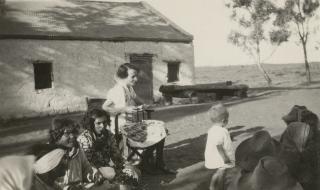
Feeding the Mission
Imagine the storage of meat in the outback heat without the convenience of modern refrigeration! The stone walls and stone floor served to provide an environment as cool as possible for keeping meat.
Read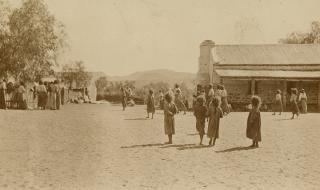
The Eating House, Rations Store and old Hospital
Food, it’s storage and distribution dominate many of the stories of the mission. Providing for the mission residents was always at the forefront of the mind of the missionaries.
Read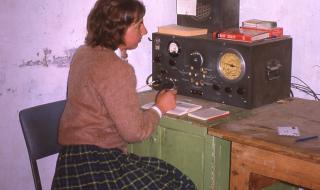
Correspondence School
While this building is referred to as the correspondence school it has actually been repurposed several times throughout the history of the mission serving as an extra class room and the correspondence school room for only part of that time.
Read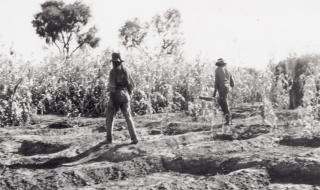
Life on the Mission was Often Hard Work
Life on the mission was a struggle, characterised by the heat, droughts and hard work. The mission was often under resourced and supplies from down south often late, with transport expensive and local food production subject to the whims of nature.
Read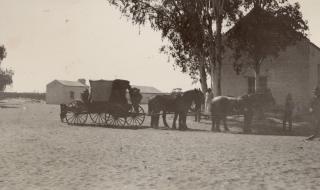
A Change of Direction 1922-1926
Following the death of Carl Strehlow. A review of the mission identified several areas of change in the approach of the mission, including the use of native evangelists, Aboriginal work-based training and the development of a commercial cattle business
Read
The Albrecht years 1926-1952
Pastor Friedrich Wilhelm Albrecht and his wife Minna Maria Margaretha (nee Gevers) inherited the task of implementing Pastor Stolz plan to make the mission more financially independent. This was the time of assimilation polices in Australia and the focus was on equipping people for a modern world.
Read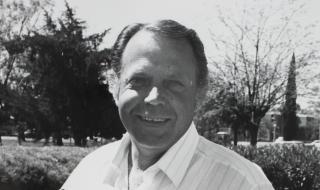
Mission to Town - Hermannsburg Mission under Pastor Albrecht
Pastor Paul Albrecht grew up at Hermannsburg, the son of Pastor F.W Albrecht and Minna. His work as Field Superintendent for Finke River Mission was at a crucial time of change, as assimilationist policies gave way to policies of self-determination. During his tenure Hermannsburg transitioned from an active mission station to the heritage precinct you see today alongside the modern township of Ntaria.
Read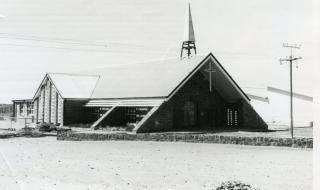
Hermannsburg Historic Precinct and Finke River Mission Today
The history of the Arrarnta Lutheran community is constantly evolving. Today, the mission building lay empty and they sit alongside the growing town of Ntaria. The ownership of the heritage precinct is in the hands of the local Western Arrarnta people who are represented by the Hermannsburg Historical Society, with the Finke River Mission acting as managers. Through close cooperation between these two bodies, this nationally significant heritage site is maintained and operated.
Read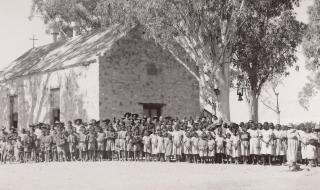
The heart of the mission
The church building of course was the heart of the mission. While the historic Church stands quietly now in the heart of the historic precinct, the new heart has moved with the growing town of Ntaria and is located outside the Mission compound; if you sit quietly enough you can still hear the echo of Arrarnta ancestors raising their voices to God.
Read



